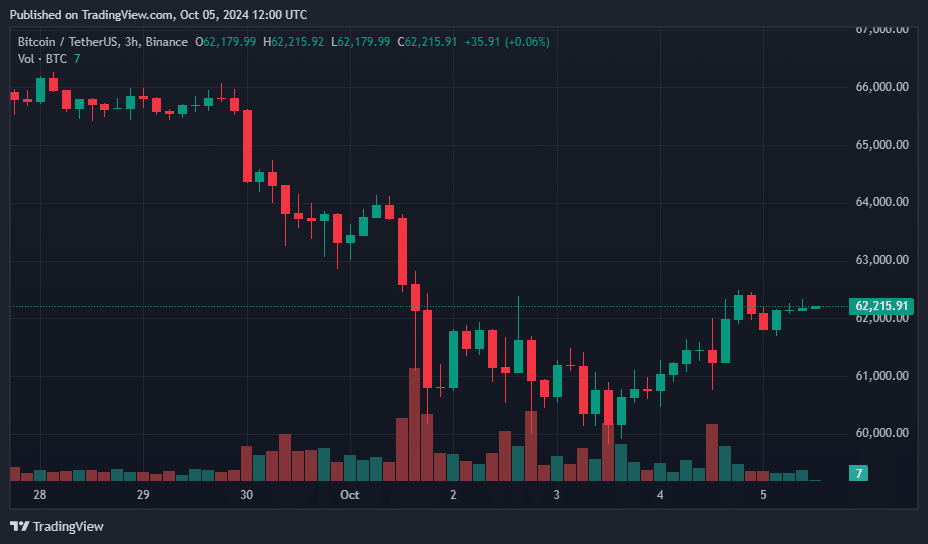This week, Spot Bitcoin exchange-traded funds in the U.S. experienced outflows exceeding $300 million, driven by global macroeconomic uncertainties regarding short-term trends.
Following the historically bearish month of September that ended with over $1.1 billion in inflows, approximately $388.4 million was withdrawn from 12 spot Bitcoin ETF funds between October 1 and October 3, coinciding with the escalated conflict between Iran and Israel, which brought Bitcoin’s price down to a weekly low of $60,047.
On October 4, more promising U.S. payroll data provided some market relief, allowing Bitcoin to regain the $62,000 threshold, while ETF products recorded inflows of $25.59 million.
Nonetheless, this rebound was insufficient to completely counterbalance the effects of the preceding three-day outflow streak.
Since September 13, three consecutive weeks of inflows had seen approximately $1.91 billion introduced into spot Bitcoin ETFs; however, the outflows this week resulted in these funds concluding the first week of October with a negative total of $301.54 million, as per SoSoValue data.
Highlighting the trading activities of the last day, Bitwise’s BITB saw the highest inflows, while seven out of the twelve Bitcoin ETF products, including BlackRock’s IBIT, showed no change.
- Bitwise’s BITB led with $15.29 million in inflows.
- Fidelity’s FBTC attracted $13.63 million.
- ARK and 21Shares’ ARKB recorded its first inflows this week, with $5.29 million.
- VanEck’s BTCW also saw an inflow of $5.29 million.
- Grayscale’s GBTC experienced outflows of $13.91 million.
Analysts identify critical price points
In addition to ETF movements, some of the selling pressure also originated from Bitcoin miners, who, according to crypto analyst Ali, have sold off about $143 million worth of Bitcoin (BTC) since September 29. See below:
The selling trend may escalate, as Ali indicated in a follow-up X post that Bitcoin was trading below the realized price of short-term holders, currently resting at $63,000.
This price represents the average acquisition cost for short-term investors’ Bitcoin, and when prices dip below this threshold, holders are inclined to sell to mitigate losses, potentially triggering a “cascading sell-off” that could apply additional downward pressure.
Thus, Ali recommended that investors monitor the $63,000 mark as a crucial level BTC must overcome to avert further declines.
Conversely, crypto analyst Immortal mentioned a slightly elevated short-term target of $64,000, suggesting that if the leading cryptocurrency can surpass this key resistance level, it could indicate the onset of a substantial bullish trend.
However, on a longer time scale, industry experts remain optimistic, pointing to Bitcoin’s historical performance in Q4 and the anticipated cuts in U.S. interest rates, which might propel prices toward the $72,000 mark despite short-term fluctuations.

At the moment of writing, Bitcoin was trading just above $62,200, representing a decline of over 5% in the past week.
Meanwhile, market sentiment seems to be improving, with the Fear and Greed Index rising back to a neutral score of 49, up from a more cautious 41 the previous day, according to data from Alternative.








